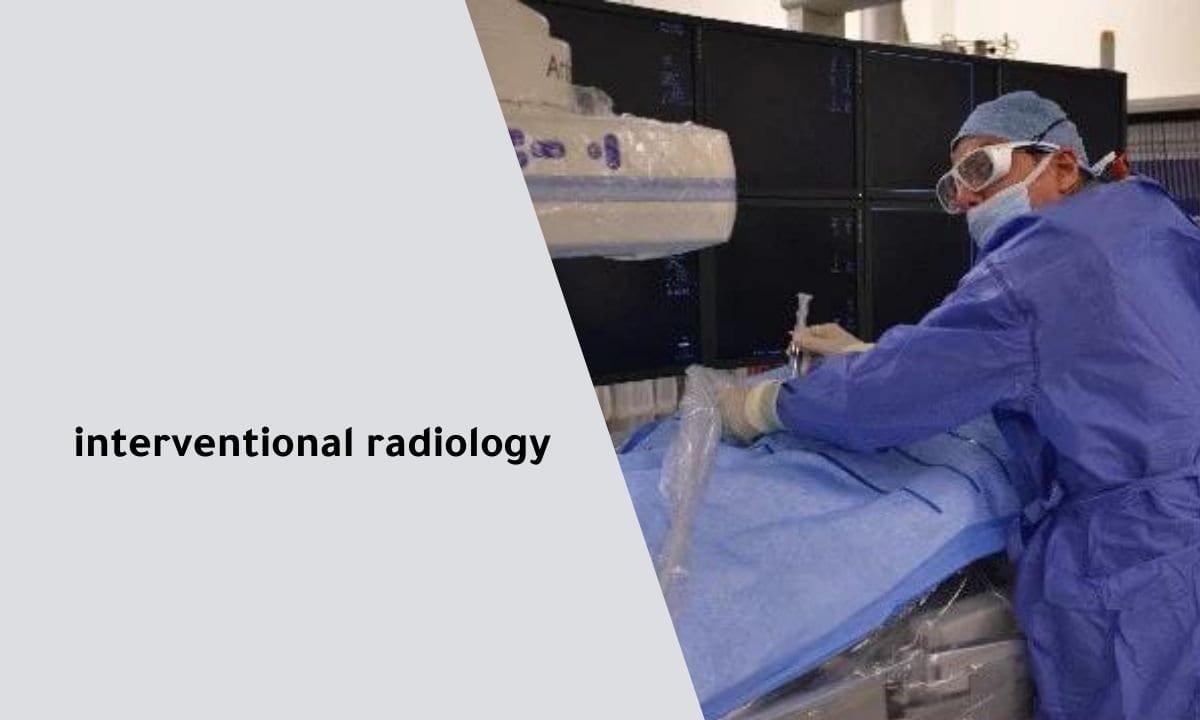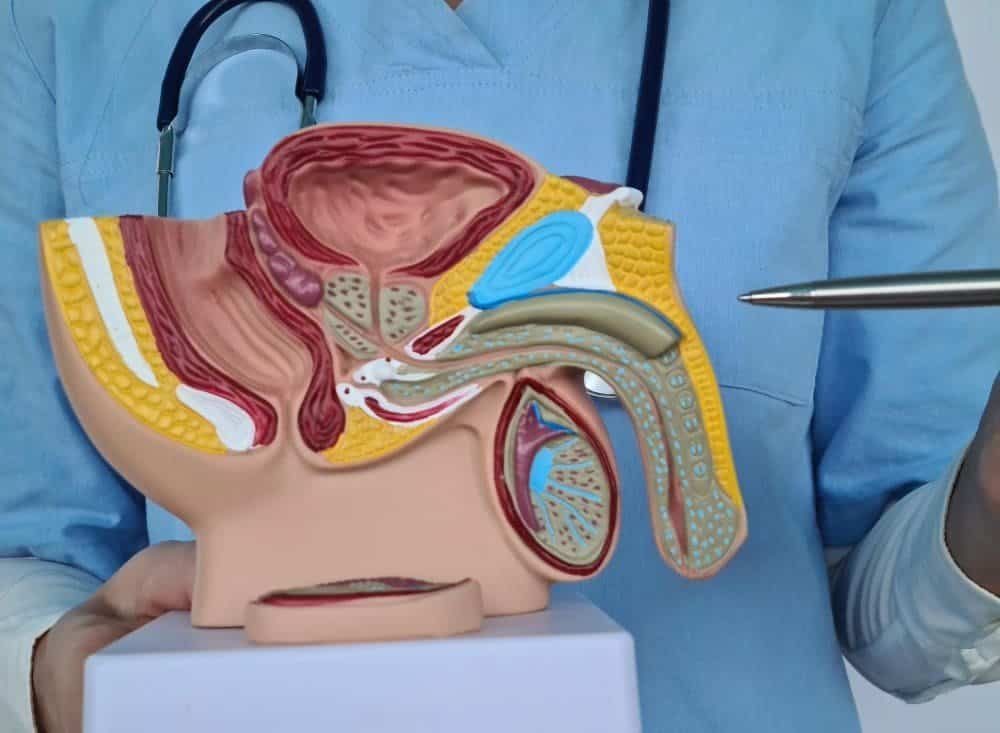Interventional radiology (IR) is a cutting-edge medical field that offers minimally invasive treatments for various conditions guided by advanced imaging techniques. Under the expertise of Dr. Samir Abdel Ghaffar, a consultant in interventional radiology, patients receive specialized care tailored to their needs.

What is Interventional Radiology?
Interventional radiology (IR) is a rapidly growing medical specialty that focuses on performing minimally invasive procedures using advanced imaging techniques. This innovative field of medicine combines the expertise of radiologists with cutting-edge technology to diagnose and treat a wide range of conditions without the need for traditional surgery. By using imaging methods such as X-rays, CT scans, ultrasound, and MRI, interventional radiologists can guide instruments through the body to target specific areas, offering precise and effective treatments.
What is an Interventional Radiologist?
An interventional radiologist is a highly trained medical doctor specializing in interventional radiology. These specialists are experts in using imaging techniques to guide minimally invasive procedures that treat various diseases and conditions. Interventional radiologists undergo extensive training in diagnostic radiology and specialized procedures, enabling them to perform a variety of treatments that were once only possible through open surgery. Their role is pivotal in modern medicine, offering patients alternatives to traditional surgical methods, often resulting in quicker recovery times, less pain, and fewer complications.
What Does Interventional Radiology Do?

Interventional radiology offers a wide range of procedures that can diagnose and treat conditions affecting almost every organ in the body. These procedures include:
- Vascular Procedures: Interventional radiology is highly effective in treating vascular conditions. Techniques such as angiography, angioplasty, and stent placement help restore blood flow in narrowed or blocked arteries. Additionally, interventional radiologists perform embolization procedures to stop bleeding or treat arteriovenous malformations.
- Cancer Treatment: Interventional radiology offers innovative options for cancer treatment, such as radiofrequency ablation (RFA) and transarterial chemoembolization (TACE). These minimally invasive techniques target tumors directly, minimizing damage to surrounding healthy tissues and improving patient outcomes.
- Spinal and Bone Procedures: For spinal fractures, interventional radiologists can perform vertebroplasty or kyphoplasty to stabilize the spine and relieve pain. These procedures are guided by imaging to ensure precision and effectiveness.
- Women’s Health: Interventional radiology provides specialized care for women, including procedures like uterine artery embolization (UAE) to treat fibroids and fallopian tube recanalization to address infertility issues. These treatments offer alternatives to more invasive surgical options, with faster recovery times and less risk.
- Biopsies and Drainage: Interventional radiologists are skilled in performing biopsies and draining abscesses or fluid collections using image-guided techniques. These procedures are less invasive than traditional methods and can be done with local anesthesia, providing patients with a safer and more comfortable experience.
- Pediatric Care: Children with certain medical conditions can benefit from interventional radiology. Specialized techniques are used to treat vascular malformations, tumors, and other conditions with minimal disruption to the child’s overall health and development.
- Pain Management: Interventional radiology offers several techniques for managing chronic pain, including nerve blocks and spinal injections. These procedures are guided by imaging to ensure accuracy and effectiveness, providing relief to patients suffering from debilitating pain.
Diagnostic Interventional Radiology
Diagnostic interventional radiology is a specialized division within medicine that combines advanced imaging techniques with minimally invasive procedures to diagnose a wide range of diseases. Using state-of-the-art technology such as X-rays, CT scans, ultrasound, and MRI, interventional radiologists guide instruments through the body to obtain detailed images of organs, blood vessels, and other structures. These diagnostic methods allow doctors to precisely identify and evaluate conditions like cancer, vascular diseases, and other disorders. The hospital’s dedicated team of board-certified professionals offers patients the most advanced diagnostic services, ensuring accurate and timely diagnosis.
Therapeutic Interventional Radiology
Therapeutic interventional radiology goes beyond diagnosis, offering innovative treatments for various medical conditions. This specialty uses image-guided techniques to perform minimally invasive procedures that can replace or complement traditional surgery. For example, interventional radiologists can treat cancer by performing radiofrequency ablation (RFA) or transarterial chemoembolization (TACE), directly targeting tumors while minimizing damage to surrounding healthy tissues. Other treatments include:
- Angioplasty to restore blood flow in narrowed vessels.
- Embolization to stop bleeding.
- Therapies for lymphatic flow disorders.
These methods, known for their effectiveness in reducing recovery time, pain, and complications, significantly enhance the quality of care for patients.
Interventional Radiology Procedures List
Interventional radiology encompasses a vast array of procedures, including:
- Angiography
- Balloon Angioplasty
- Stenting
- Embolization
- Thrombolysis
- Radiofrequency Ablation
- Cryoablation
- Biopsies (liver, kidney, lung)
- Catheter Placement
- Vertebroplasty/Kyphoplasty
- Uterine Artery Embolization
- Dialysis Access Management
- Biliary Drainage
- Endovenous Laser Therapy (EVLT)
Techniques for Specific Disorders in Interventional Radiology
Below, we explore specific techniques used in interventional radiology for treating adenomyosis, uterine fibroids, varicocele, prostatic hyperplasia, hypothyroidism, and uterine bleeding.
Adenomyosis
Adenomyosis disease, a condition where the inner lining of the uterus breaks through the muscle wall, often leads to severe pain and heavy menstrual bleeding. Interventional radiologists offer uterine artery embolization (UAE) as a recognized and effective technique to treat this condition. Using advanced imaging technology like ultrasound and CT scans, radiologists can guide tiny instruments through the blood vessels to block the arteries supplying the adenomyosis, reducing symptoms and preserving the uterus.
Uterine Fibroids
Uterine fibroids are benign tumors that can cause significant discomfort, heavy bleeding, and fertility issues. (UAE) Uterine artery embolization is also utilized in this context, as it effectively shrinks fibroids by cutting off their blood supply. This technique provides an alternative to surgical options like hysterectomy or myomectomy, offering patients a less invasive treatment with shorter recovery times and reduced pain.
Varicocele
Varicocele, an enlargement of the veins within the scrotum, can lead to infertility and discomfort. Interventional radiologists perform a procedure known as varicocele embolization to treat this condition. This technique involves using specialized instruments and imaging guidance to block the affected veins, alleviate symptoms, and improve fertility outcomes. The procedure is typically performed outpatient, allowing for quick recovery.
Prostatic Hyperplasia
Benign prostatic hyperplasia (BPH) is a common condition in older men, leading to urinary problems and discomfort. Prostate artery embolization (PAE) is an innovative technique interventional radiologists offer to treat BPH. Using advanced imaging, radiologists guide catheters to the arteries supplying the prostate and block them, reducing the size of the prostate and relieving symptoms. This minimally invasive approach is a viable alternative to more invasive surgical procedures.
Hypothyroidism
For hypothyroidism caused by thyroid nodules, interventional radiologists may perform radiofrequency ablation (RFA) or ethanol ablation to treat the nodules. Guided by ultrasound, these techniques allow radiologists to precisely target and shrink the nodules, potentially improving thyroid function and reducing the need for medication.
Uterine Bleeding
Uncontrolled uterine bleeding can be life-threatening and requires prompt treatment. Interventional radiologists use uterine artery embolization or direct embolization techniques to control bleeding. Using real-time imaging guidance, radiologists can pinpoint the bleeding source and effectively block it, stabilizing the patient and preventing further blood loss.
Most Common Interventional Radiology Procedures
Some of the most common interventional radiology procedures include:
- Angioplasty and Stent Placement: Widely used to treat blocked arteries.
- Biopsies: Image-guided biopsies are commonly performed to diagnose cancers.
- Embolization: Often used for controlling bleeding or treating tumors.
- Vertebroplasty/Kyphoplasty: Commonly performed to treat spinal fractures.
- Uterine Artery Embolization: A frequent procedure for treating fibroids.
Interventional Radiology Near Me
If you’re searching for “interventional radiology near me,” you can typically find IR services at major hospitals, specialized medical centers, or clinics. Many hospitals have a dedicated interventional radiology department, often within the radiology division. You can also consult with your primary care physician or specialist to get a referral to a reputable interventional radiologist in your area.
FAQS
What is the difference between radiology and interventional radiology?
Radiology primarily focuses on diagnosing diseases through imaging techniques like X-rays, CT scans, and MRIs. In contrast, interventional radiology (IR) involves diagnosing and performing minimally invasive procedures using imaging guidance to treat various conditions.
What is another name for interventional radiology?
Another name for interventional radiology is VIR (Vascular and Interventional Radiology).
What cases are done in interventional radiology?
Interventional radiology used in cases such as treating narrowed arteries, performing biopsies, placing devices like stents, and managing conditions like lymphatic flow disorders, spinal fractures, and uterine fibroids. It is also utilized in therapeutic procedures for women’s health and children, often involving a multidisciplinary team of specialized professionals.
In conclusion, Interventional radiology offers a variety of minimally invasive techniques for treating specific disorders, providing patients with innovative and effective care. By utilizing advanced imaging technology, specialized instruments, and the expertise of board-certified radiologists, interventional radiology remains at the forefront of modern medicine. This approach improves outcomes and reduces recovery times and the risks associated with traditional surgery. The dedication of interventional radiologists to providing high-quality care for complex conditions like adenomyosis, uterine fibroids, varicocele, prostatic hyperplasia, hypothyroidism, and uterine bleeding highlights the crucial role of this specialty in today’s healthcare landscape.
 العربية
العربية 


